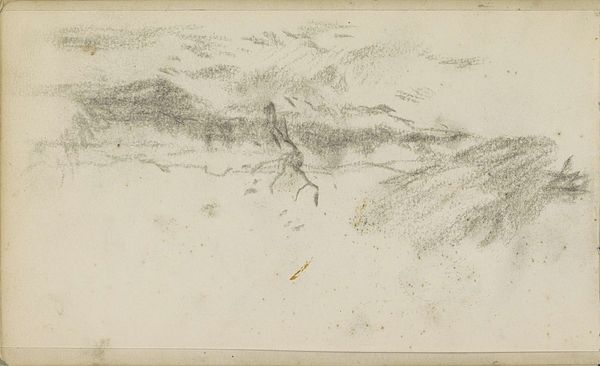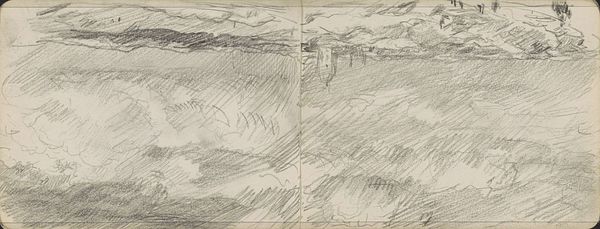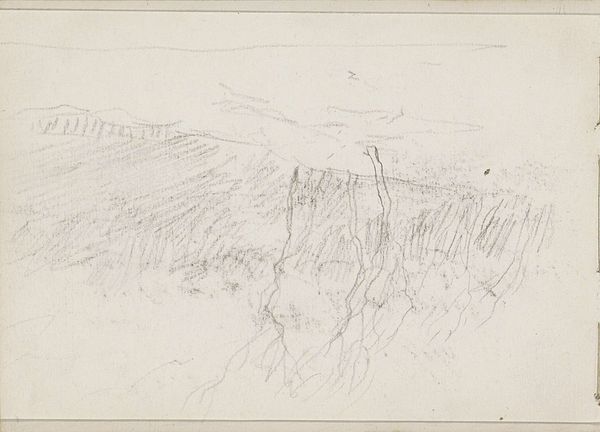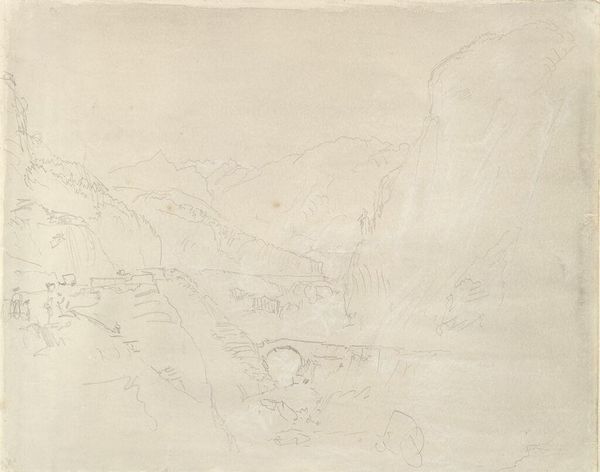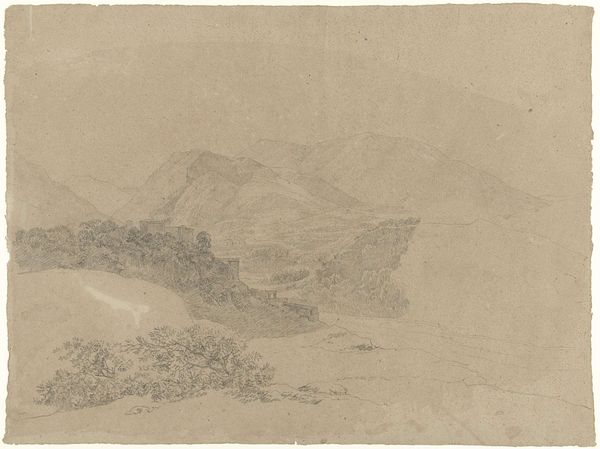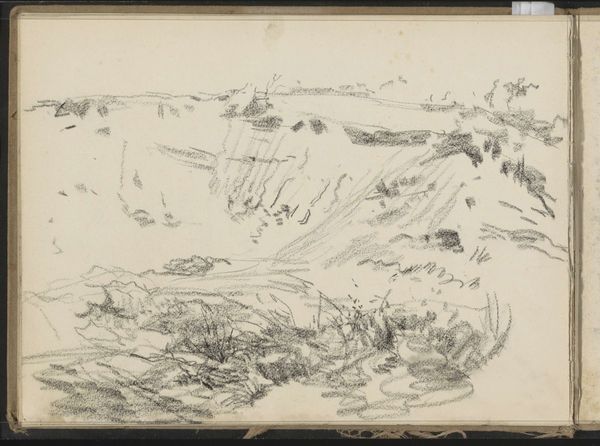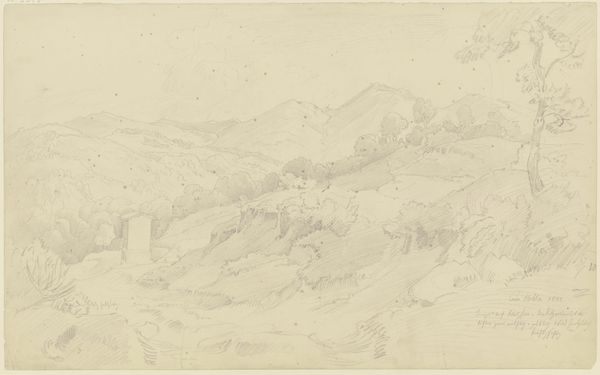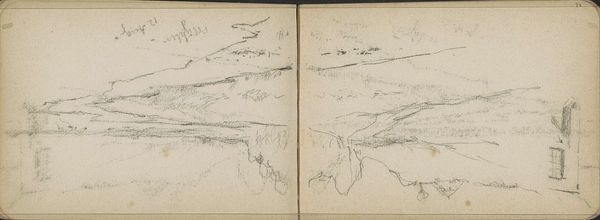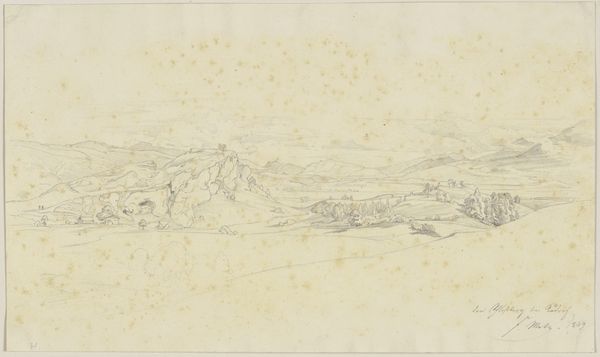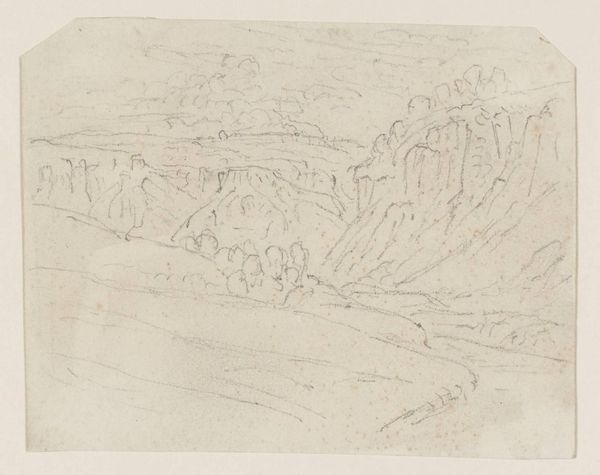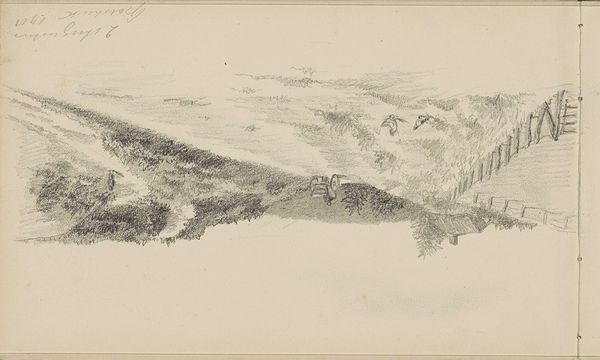
Copyright: Rijks Museum: Open Domain
Johan Antonie de Jonge's 'Duinlandschap' is a sketch made with graphite, likely in a notebook, capturing a dune landscape. De Jonge's marks are so direct, almost like automatic writing, feeling out the form of the dunes. It's about process, the act of seeing and responding. The graphite is applied in layers of short, hatched lines, building up texture and depth. In the lower part of the drawing the marks become more and more sparse, like a conversation petering out. There’s a raw quality to it, the strokes are clearly visible. Notice how the density of the marks creates volume and suggests the play of light on the sand, and how the negative space is just as important as the lines themselves. There’s an energy in those rapid marks, like de Jonge was trying to capture the fleeting essence of the landscape, not just its appearance. It reminds me of drawings by Mondrian, who was a little bit younger, also interested in the rhythms of nature, and also working in the Netherlands at this time. 'Duinlandschap' embraces the unfinished, the provisional, and that's where its beauty lies.
Comments
No comments
Be the first to comment and join the conversation on the ultimate creative platform.
